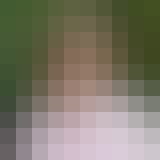本课程将介绍各领域专家所使用的学习方法,他们包括艺术家、文学家、数学家、科学家、运动员和很多其他领域专家。我们将学习如何使用两种不同的大脑模式,以及大脑如何封装(“chunks”)信息。我们还将介绍能力错觉(illusions of learning),记忆技巧,对付拖延症的方法,以及研究表明能帮助我们掌握困难科目的方法。 无论您在所学领域是专家还是菜鸟,您都可以使用这些方法,改变自己的思维模式,重塑自己的人生。如果您是所学领域的专家,通过学习大脑认知的底层知识,您可以进一步提高自己的学习能力,您将了解反直觉的考试技巧和见解,从而能够更高效地完成作业和习题。如果您在学习中遇到困难,系统有效的学习技巧将帮助您将走上正轨。无论您希望学习什么内容,这门课程都可以作为您的指南。
怎样形成组块——第2部分

Loading...
Reviews
4.9 (1,597 ratings)
- 5 stars90.41%
- 4 stars8.64%
- 3 stars0.75%
- 2 stars0.06%
- 1 star0.12%
TW
Mar 12, 2018
A really amzing course which helps me a lot improve in other subjects. I encourage everyone should take this couse before taking any other course.
By the way, thanks for the lecturers and coursera.
IW
Sep 30, 2017
A very useful and inspiring course make me understand myself more on how to progress on learning. The teachers taught the course in a very easy-to-access way for students, and also very interesting.
From the lesson
组块
本单元中我们将探讨组块这一概念。组块指你的大脑可轻松获得的一个紧密的信息包。我们将探讨你能怎样形成组块、怎样利用组块提升自己对学习内容的理解力与创造力以及组块能怎样帮助你在测验时表现更好。我们还将探索学习时的能力错觉、过度学习的挑战以及交叉学习的优势。
Taught By

Barbara Oakley
Professor of Engineering

Dr. Terrence Sejnowski
Francis Crick Professor at the Salk Institute for Biological Studies

Hong Chee Joo
